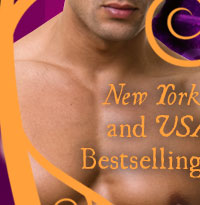
Langston Hughes wrote this about Jesse Redmon Fauset in his memoir, The Big Sea, “Jessie Fauset at The Crisis, Charles Johnson at Opportunity, and Alain Locke in Washington were the three people who midwifed the so-called New Negro literature into being.”
As I learned more about Ms. Fauset for this blogpost, I believe mother is a more accurate title for Jesse since she was the first to publish the work of many Harlem Renaissance luminaries, including Hughes, and literally gave birth to their careers.
She was born Jessie Redmon Fauset on April 27, 1882, near Camden, New Jersey, the seventh child of Rev. Redmon and Mrs. Annie Fauset. She grew up in Philadelphia and graduated valedictorian from the Philadelphia High School for Girls. The school’s valedictorians traditionally received scholarships to Bryn Mawr, but Bryn Mawr president, M. Cary Thomas, raised money for Fauset to attend Cornell University instead.
In addition to her degree in classical languages from Cornell University in 1905, Fauset received a Master’s degree in French from the University of Pennsylvania (1919). She also spent summers studying at the Sorbonne in Paris.
Until 2004, she had been mistakenly cited as the first black woman accepted into the Phi Beta Kappa society. That honor belonged to Mary Annette Anderson, the subject of my June blog post.
Fauset became a teacher at M Street High School in Washington, D.C., which was renamed in 1916 to Dunbar High School in honor of poet Paul Laurence Dunbar. In 1912, she began contributing poetry, short stories, reviews, translations, and essays to the NAACP’s magazine, The Crisis.
In 1919, W.E.B. Du Bois offered her the position of literary editor, where she worked until 1926. She introduced new talents and especially championed the works of women like Zora Neale Hurston, Nella Larson, and Alice Dunbar-Nelson.
Fauset was also the editor and co-author of the African American children’s magazine The Brownies’ Book from 1920 to 1921 where “children of the sun” could learn to appreciate their heritage.

Disgusted by white authors’ stereotypical depictions of African American life, she published four novels that offered authentic portrayals of the black middle class’s experience: There Is Confusion (1924), Plum Bun (1928), The Chinaberry Tree (1931), and Comedy, American Style (1933).
Once she left The Crisis she taught in New York City public schools from 1926 until 1944. In 1929, she married businessman Herbert Harris and remained so until his death in 1958. She then returned to Philadelphia, where she died from heart disease on April 30, 1961.
A portrait of Jesse painted by Laura Wheeling Waring (subject of my May blog post) is on view at the National Portrait Gallery in Washington D.C.
For a fascinating look at Redmon’s life and times in Harlem, read Victoria Christopher Murray’s historical novel Harlem Rhapsody.
I continue to stand in awe of women like Jessie Redmon Fauset. I hope one day to leave a legacy that inspires others the way her example inspires me.
Contest: For a chance at a $10 Amazon gift card, share your thoughts on Jesse and women like her in the comments.
“The Patience of Unanswered Prayer”
by Michal Scott in Cowboys

Kidnapped and destined to be another victim of Reconstruction-era violence, a feisty shop owner is rescued by a trail boss whose dark secret might save them both.
Buylink: https://amzn.to/3zfDpo2
Excerpt:
So, this was how one got to heaven, in the arms of a beautiful black angel. Or was it Jesus himself? Eleanor had made a game of memorizing images of blackness from the Bible. A description from the Book of Revelation surged to the fore.
And his feet like unto fine brass, as if they burned in a furnace; and his voice as the sound of many waters…His head and his hairs were white like wool, as white as snow; and his eyes were as a flame of fire.
This had to be heaven. Where else would she find a fine Black man with hair like wool – not white but black shot through with threads of gray and silver – with wonderfully hairy arms to be her cushion? She’d never experienced the ecstasy now ablaze between her thighs on earth.
This had to be heaven.
A different kind of fire burned along her shoulder. She hissed against the pain.
Pain in heaven? Perhaps the transition from the earthly to the heavenly came with pain at first. Like having a tooth pulled. Ache and pang overwhelmed until a peace settled.
Like the peace of surrendering to the patience of unanswered prayer.


















